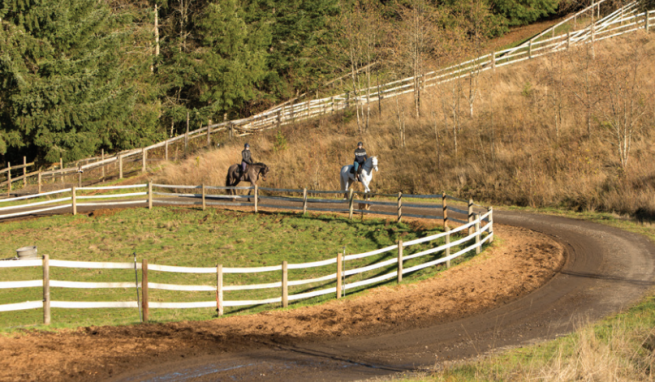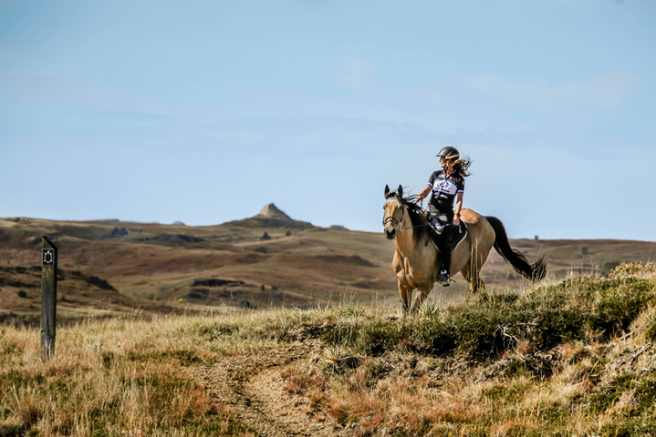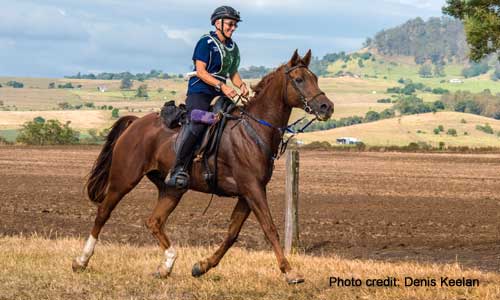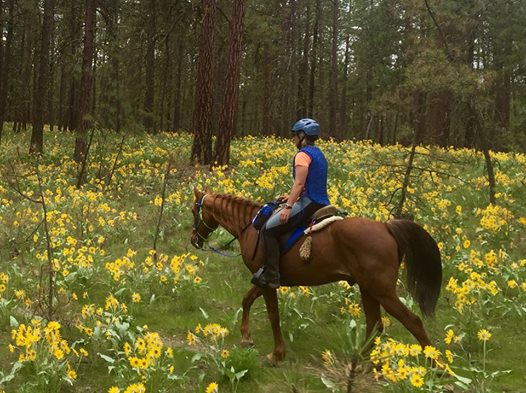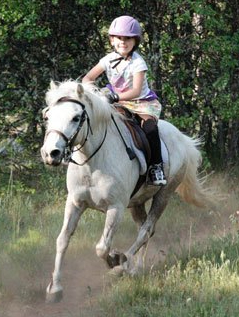The short answer is yes.
A traditional treed English saddle has a recessed metal stirrup bar affixed to the tree of the saddle. It is recessed into the tree so when the buckle of the English stirrup leather is right up against the stirrup bar, you won’t feel it under your thigh. It is covered with a small skirt of leather. Sometimes this still results in a bulge over the buckle, but it’s slight, and most people can tolerate the small lump under their thigh.
Treeless saddles do not have a tree, and therefore the stirrup attachment is most often under the seat. If you put your English stirrup leathers under the seat in the traditional way, the buckle will be a lump right under your thigh and you will be very uncomfortable. The solution is to put the buckle of the stirrup leather down by your ankle.
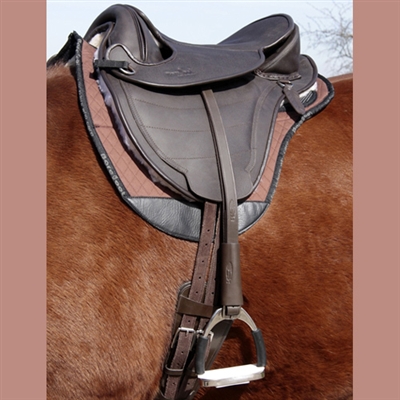
Basically, you are turning the English stirrup leathers upside down. Under your seat will only be the fold of the leather, and it will lie flat and not bother you. Now that you have the buckle down by your ankle, what do you do with the excess ends of the leathers so they don’t flop around?
To answer this question, the illustration below works better than words. Simply tuck the ends of the leathers back into the buckle and then between the two layers of leather and slide a stirrup keeper over the whole thing to keep everything neat and tidy. Ta-da!

Barefoot English Stirrup Leathers are rigged so the buckle is at the ankle and comes complete with the stirrup leather keeper. They are nylon lined so they won’t stretch, and made with soft and pliable leather for comfort.

You can use regular English stirrup leathers with a treeless saddle if you put them on as the above illustration shows. You can purchase the Action Rider Stirrup Leather Keeper separately.
A traditional western saddle with fenders has the buckle for adjustments down by the ankle. The western or endurance fenders for a treeless saddle has a similar design. It is important for the top of the fender to be thin and pliable enough for it to lay smoothly under the seat of the western treeless saddle. The Barefoot Western Fenders and Barefoot Endurance Fenders are made with a nylon section that goes through the stirrup attachment to allow it to lay as flat as possible under the seat.
In Conclusion
The most important element for success with your English stirrup leathers, western fenders or endurance fenders with a treeless saddle is to eliminate the bulk of the buckles from under your thigh. To do this, the buckles need to be positioned down just above the stirrup, near your ankle. The result will be a smooth transition under your leg and you will be comfortable and in close contact with your horse.

 Training your horse to move forward willing and dependably is the most important element to having a responsive and well-behaved horse. Most behavior problems begin with your horse’s resistance to the forward aids – your legs and seat. Severe resistance to the forward aids can result in bucking, rearing, shying, balking, and being unwilling to leave other horses or leave the barn. These are serious issues, but the cure is to go back to square one – your horse’s response to the go forward aids.
Training your horse to move forward willing and dependably is the most important element to having a responsive and well-behaved horse. Most behavior problems begin with your horse’s resistance to the forward aids – your legs and seat. Severe resistance to the forward aids can result in bucking, rearing, shying, balking, and being unwilling to leave other horses or leave the barn. These are serious issues, but the cure is to go back to square one – your horse’s response to the go forward aids.